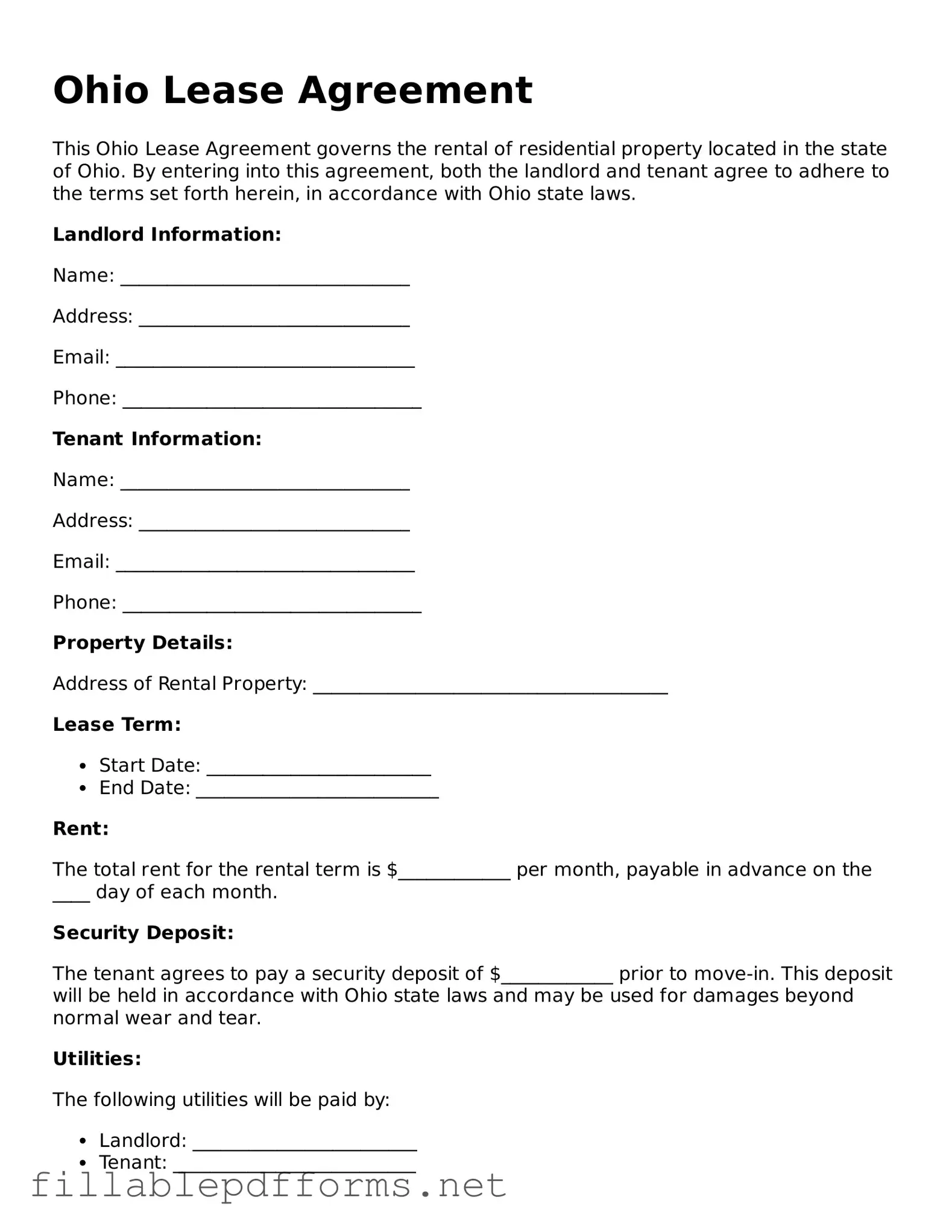Attorney-Verified Lease Agreement Form for Ohio State
The Ohio Lease Agreement form is a legal document that outlines the terms and conditions between a landlord and a tenant for renting residential or commercial property in Ohio. This agreement serves to protect the rights of both parties while clearly defining their responsibilities. Understanding this form is essential for anyone entering into a lease in the state, as it sets the groundwork for a successful rental relationship.
Launch Editor Here
